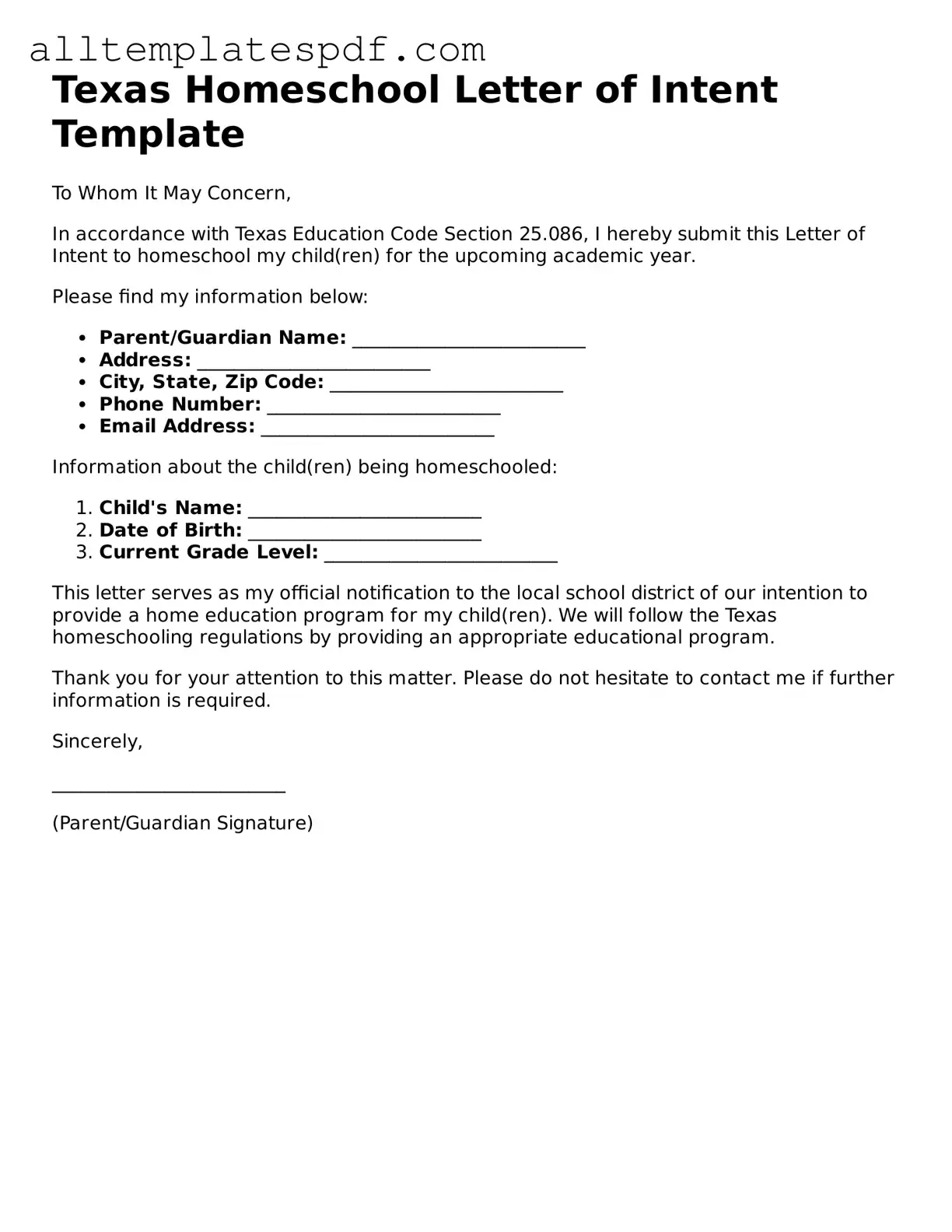Blank Homeschool Letter of Intent Template for the State of Texas
The Texas Homeschool Letter of Intent is a crucial document that parents must submit to officially notify the state of their decision to homeschool their children. This form outlines the educational approach being taken and ensures compliance with Texas homeschooling laws. Understanding how to complete this form is an essential step for families embarking on their homeschooling journey.
Ready to get started? Fill out the form by clicking the button below!
Open Editor
